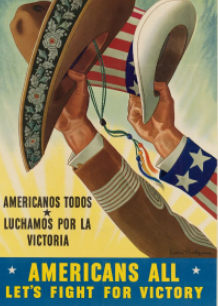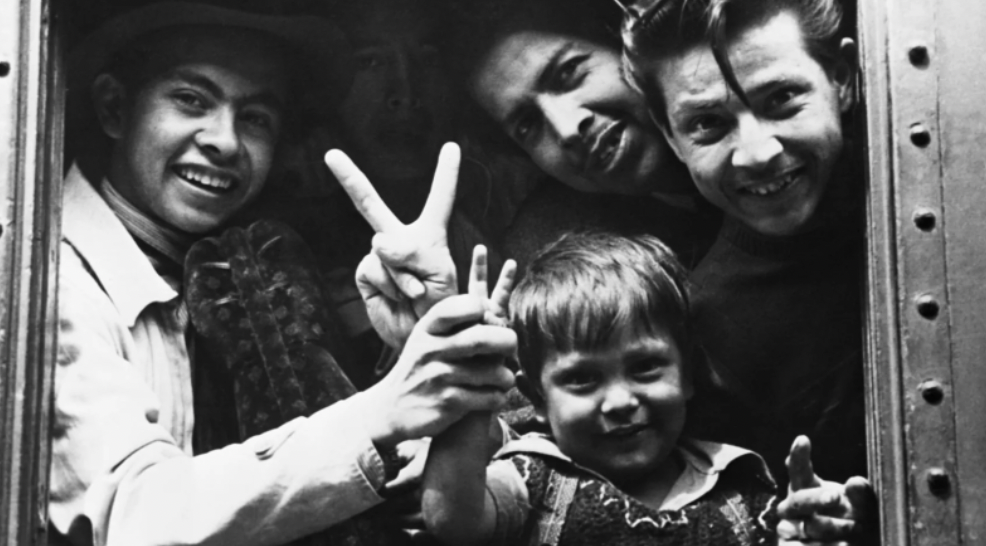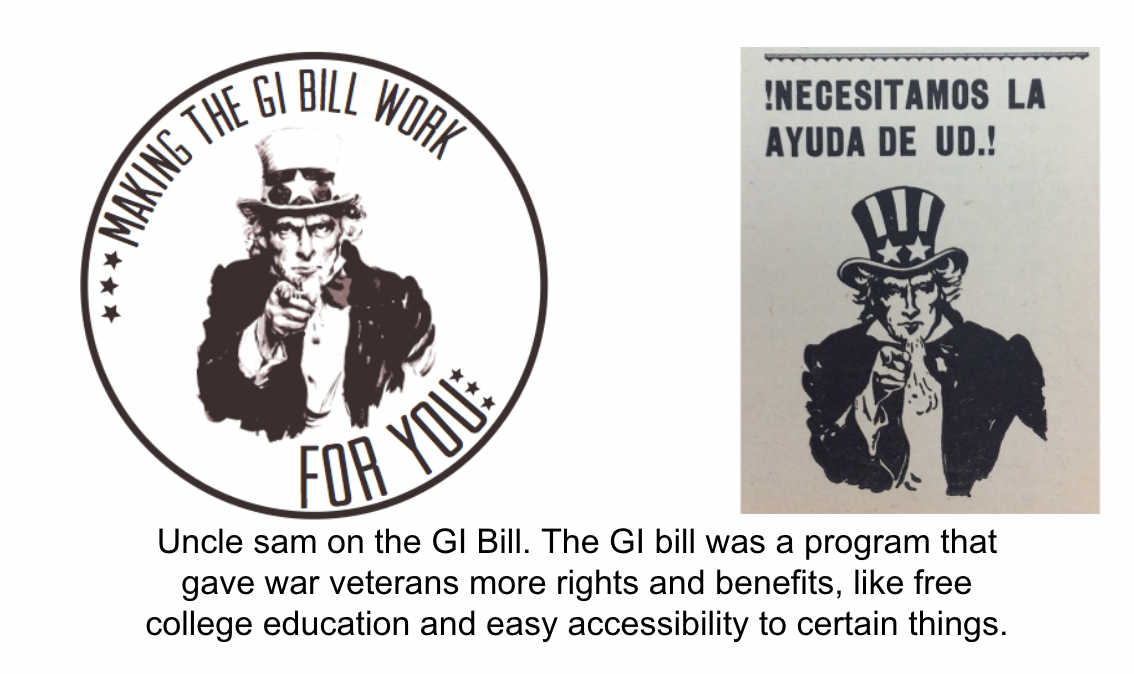In the Hispanic community after the 38th street boys won the appeal, they had hope. For what felt like the first time in years, they had been treated fairly. This hope led them to fight and protest for equality and fair treatment. This effort was not in vain and when the Hispanic war veterans came back from World War II, they were allowed the GI bill. This bill gave them access to free education and one year of paid unemployment. In addition something that happened in the Hispanics’ favor is that Manuel Ruis jr. “desegregated” schools and made more schools accessible to Hispanic students. Even though all of this great change happened, there was still racism in people’s hearts and racism didn’t completely disappear.
After World War II, hispanics wanted to fight to be fully accepted because of their hard work in the war. The white people around the Mexican-Americans started to appreciate them and discriminatory bias against them was reduced. During this period, groups such as the American GI Forum and League of United Latin American Citizens campaigned tirelessly for equal rights, such as better paying jobs. The GI forum delivered plenty of benefits to World War II veterans of color, and other groups seeking racial justice started to emerge as well. As Hispanic groups started campaigning for equal rights, many signs of progress arose as discriminatory measures were starting to become illegal. Some discriminatory measures were removed entirely. It did not stop people from finding loopholes around laws to not discriminate, while still being biased against them.
After World War II, hispanics wanted to fight to be fully accepted because of their hard work in the war. The white people around the Mexican-Americans started to appreciate them and discriminatory bias against them was reduced. During this period, groups such as the American GI Forum and League of United Latin American Citizens campaigned tirelessly for equal rights, such as better paying jobs. The GI forum delivered plenty of benefits to World War II veterans of color, and other groups seeking racial justice started to emerge as well. As Hispanic groups started campaigning for equal rights, many signs of progress arose as discriminatory measures were starting to become illegal. Some discriminatory measures were removed entirely. It did not stop people from finding loopholes around laws to not discriminate, while still being biased against them.
|
This poster shows that everyone should fight for victory.
|
This is a photo of a Mexican family going to cross the border during World War II to help wartime labor shortages.
|
Uncle sam on the GI Bill. The GI bill was a program that gave war veterans more rights and benefits, like free college education and easy accessibility to certain things.
|




